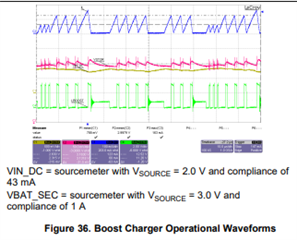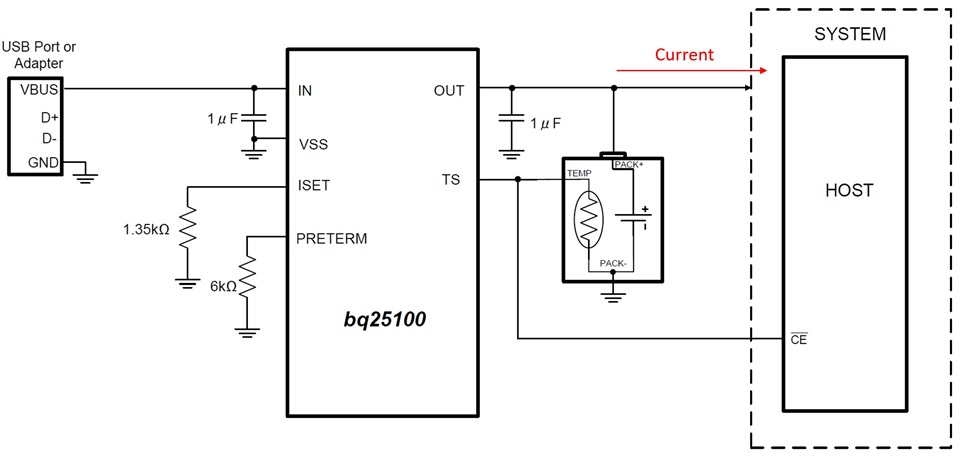Other Parts Discussed in Thread: BQ25100
Hi,
I am using BQ25505 to charge my 4V battery using a solar cell. Solar cell will input about 90mW at 1 SUN
My VBAT_OK=3V, so battery current can raise to 30mA. My battery maximum charging current spec is 100mA @-20-50° and 20mA@-40-65°. Boost charger seems to exceed maximum charging current of battery (20mA) @ 1SUN and 50-65° temperature range.
How can I limit charging current @50-65° to 20mA max to prevent damaging battery? Can it be done through BQ25505 directly, and if not, what could be the best external circuitry to add (with minimal power waist) to perform this functionality.





